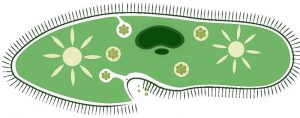Phototropism
Almost all plants are capable of performing the process of photosynthesis, and this process is key to their survival as it allows them to make sugar molecules that serve as fuel and building materials. But plants can respond to light in other ways as well. These responses that are not related to photosynthesis allow plants to adapt to their environment and be able to improve their growth.
What is phototropism?
Phototropism is the process by which a plant moves naturally and organically to change its position in the direction of light, in response to the stimulation of the sun's rays.
About phototropism
Phototropism is a response to light in plants, which involves growth to or from a light source. This response allows the green parts of the plant to approach a source of light energy, which can then be used for photosynthesis.
In 1880, Charles Darwin and his son Francis, published an article in which they explained the inclination of grass towards light. Specifically, they examined this response in very young, newly sprouted plants whose leaves and shoots were still covered by a pod called coleoptile.
The process is considered to be a plant hormonal reaction that is used to encourage plant growth. We can then say that phototropism is the movement made by a plant in order to look for a source of light, in other words, it consists of changing the location or orientation of the plant to receive sun’s rays. It can also be considered as a chemical signal, because when some types of hormones are released into the plant system, the cells of the part that receives sunlight grow faster.
Types of phototropism
There are two important types of phototropism:
- Positive phototropism is the strategy that plants have to capture as much sunlight as possible through their leaves. When the seedlings grow by gravity force, they immediately receive a clue to orient their path and thus, are able to bend in the direction of the light source. This movement is done by means of auxin which is a phytohormone which is regulated by the amount of sun and is also responsible for bending the plants in search of light.
- Negative phototropism: is the tendency that some types of plants have to move away from sunlight. An example of this is the roots, which grow contrary to sunlight, but take advantage of the moisture and nutrients in the soil.
Auxins
Auxins are a potent growth hormone naturally produced by plants. It is located at the buds and tips of the roots and promotes cell division, stem and root growth. They can also drastically affect plant orientation by promoting cell division to one side of the plant in response to sunlight and gravity.
Auxins have four major effects on plant growth:
- Stimulation of bud lengthening: they positively influence cell lengthening which increases the plant length.
- Controlling the orientation of the seedlings: when a new shoot grows in the soil or towards the light, it depends on where the auxins are and how they influence the cells inside the plant. The auxins will move downward due to gravity and sideways away from light.
- Stimulating root branching.
- Promoting fruit development: auxins in the flower promote ripening of the ovarian wall and promote steps in the full development of the fruit.
Experiment
One experiment that can be carried out in a simple way is using, for example, sunflower seeds or corn seeds. A cardboard box is needed, in which the plant will be placed. Make a hole in the box of about 2 inches and then close it with the plant inside. As the plant grows, you will be able to see how it looks for the opening that we have done before.
Examples of phototropism
Some examples of phototropism are the following:
- The ficus cause their roots to migrate out looking for water sources so when they emerge under streets or pavement, they break the cement and pipes in their path until they reach what they need. This is an example of positive phototropism.
- A clear example of positive phototropism that we easily observe are the sunflowers that have a great capacity to face the sun. So they can have constant access to the sun’s rays.
- Some water plants can grow in the opposite direction to the sun’s rays. In the same way, the roots of terrestrial plants seek to bury their roots in the soil.
How to cite this article?
Briceño V., Gabriela. (2019). Phototropism. Recovered on 3 May, 2025, de Euston96: https://www.euston96.com/en/phototropism/










